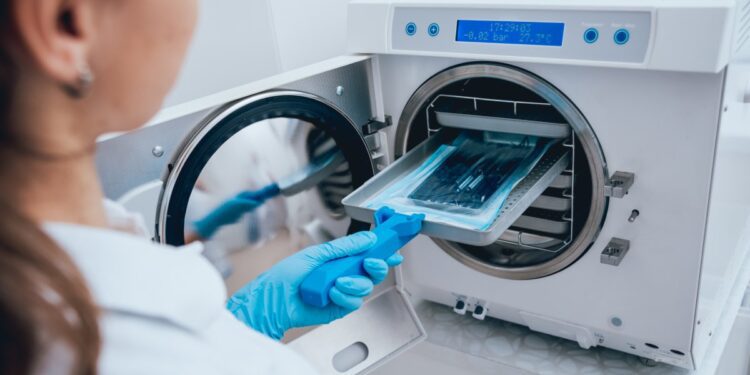Autoclaves are fundamental to infection control in healthcare facilities worldwide. These critical sterilization devices ensure patient safety by eliminating harmful microorganisms from medical instruments and equipment. Healthcare professionals who know the expected lifespan of these devices can make informed decisions about maintenance, budgeting, and replacement planning.
Most healthcare facilities rely heavily on these steam sterilizers for daily operations. Knowing when your autoclave might need attention—or replacement—can prevent costly downtime and maintain compliance with safety standards. We’re taking a brief look at the average lifespan of an autoclave and what to know for your facility.
Average Autoclave Lifespan
Healthcare-grade autoclaves typically last between 10 to 20 years with proper maintenance. However, several factors influence this range:
- Usage Frequency: High-volume facilities may see shorter lifespans.
- Maintenance Quality: Regular servicing extends equipment life significantly.
- Water Quality: Hard water accelerates component wear.
- Operating Environment: Temperature and humidity affect longevity.
- Model Quality: Commercial-grade units generally outlast basic models.
Tabletop autoclaves in smaller practices often last 8 to 15 years, while large floor-standing units in hospitals may operate effectively for 15 to 25 years.
Signs Your Autoclave Needs Attention
Healthcare professionals should monitor their autoclaves for warning signs that indicate maintenance or replacement needs:
Performance Issues
- Inconsistent temperature readings
- Extended cycle times
- Frequent error codes or alarms
Physical Deterioration
- Rust or corrosion on internal components
- Cracked or warped chamber walls
- Damaged door gaskets
When multiple issues occur simultaneously or repairs become frequent and costly, it’s time for a new autoclave.
Factors That Extend Autoclave Life
Proper care significantly impacts autoclave longevity. Healthcare facilities can maximize their autoclave investment by following a few best practices.
Regular Maintenance Schedules
Professional servicing every 6 to 12 months prevents minor issues from becoming major problems. Technicians inspect critical components, replace worn parts, and calibrate systems for optimal performance.
Daily Care Practices
Staff training on proper operation reduces unnecessary wear. This includes using appropriate water types, avoiding overloading, and following manufacturer guidelines for cleaning and operation.
Water Quality Management
Installing water filtration systems or using distilled water prevents mineral buildup that damages internal components. Hard water deposits can reduce autoclave lifespan considerably.
When Replacement Makes Financial Sense
Healthcare administrators must weigh repair costs against replacement benefits. Consider replacement when:
- Annual repair costs exceed 50 percent of a new unit’s price
- Parts become difficult to source or discontinued
- Energy efficiency improvements justify the investment
- Compliance requirements change, requiring updated features
- Capacity needs have grown beyond current capabilities
Maximizing Your Investment
Strategic planning helps healthcare facilities get the most from their autoclave investments. Budget for replacement well before equipment failure occurs. This approach allows time for research, competitive bidding, and proper installation without disrupting patient care.
Documentation of maintenance records, repair costs, and performance issues provides valuable data for replacement timing decisions. This information also justifies capital expenditure to administrators and boards.
Planning for the Future
Autoclave technology continues advancing, offering improved efficiency, better monitoring capabilities, and enhanced safety features. Healthcare professionals should stay informed about developments that might benefit their specific applications.
Regular assessment of your facility’s sterilization needs ensures your autoclave capacity matches current and projected demand. Growing practices may need larger units, while changing procedures might require different cycle options or chamber configurations.
Knowing the average lifespan of an autoclave empowers healthcare professionals to make proactive decisions about their sterilization equipment. Proper maintenance, careful monitoring, and strategic replacement planning ensure continuous, reliable sterilization capability that protects both patients and staff.















